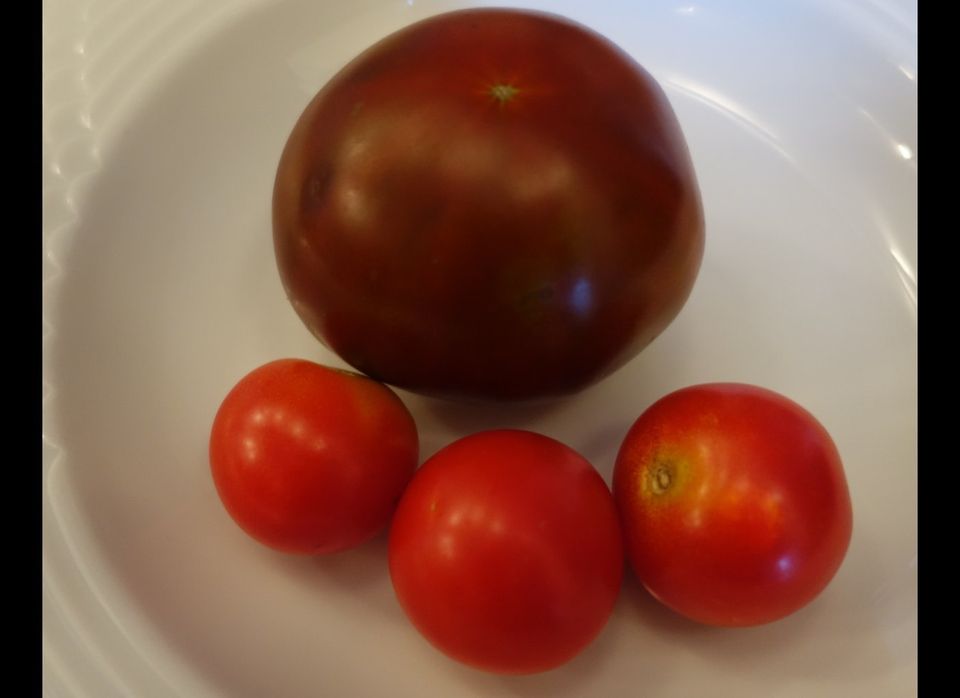During our most recent trip to England - rich in good opera and good food - Jackie and I had a terrific tomato risotto at the new Covent Garden version of our friend Angela Hartnett's Café Murano. I duly put it on my to-cook list but didn't get around to it until the other day, and even then not in its pure form. What happened was that I had set aside the stems from a bunch of Swiss chard (the leaves were to become a stuffing for chicken legs), and it occurred to me that these would make an interesting - and good - risotto: they have an earthy flavor I'm particularly fond of. And they take a while to cook, so they could go into the pan right at the beginning: one less thing to think about.
But then I remembered that Café Murano risotto and saw the basket of ripe farmers' market tomatoes on the counter. I used to not cook Swiss chard (or other greens) with tomato. Ever. It was a little idée fixe of mine that they were natural-born enemies. This of course was nonsense, as a friend did not hesitate to tell me some years ago when I confessed my quirk, and after one tentative dish of pasta with greens and tomatoes I snapped out of it and began to pair the two things when they overlapped in the market.
There's no need to go through the risotto-making. Here's how the chard and tomatoes fit into the normal procedure: I cut the stems (of several colors - there were no bunches of plain green chard in the market, which displeased me: If I want polychrome food, I'll buy M&Ms) into bite-sized pieces. The broader stems I cut on the bias, the thinner ones straight across. And, for our usual two portions, I grated a medium tomato and three smaller ones on a box grater: I halved each then used my fingertips and palm to rub the tomatoes through the holes, leaving the skins behind. (This is a great way of generating what amounts to a pulpy raw tomato sauce.)
The chard went into the risotto pan when the shallots (and a tiny bit of garlic in this case, to complement both the chard and the tomatoes) had softened in their olive oil and the rice had been added and stirred for half a minute. The chard was likewise stirred for a little while before I began adding liquid - first, white wine, then a dilute chicken stock, all properly salted. Along with the first small ladleful of stock, I added the tomatoes, pulp, juice, seeds and all, then continued as usual.
As planned, when the rice was done, so were the chunks of chard stem. They were a little crunchy, which is a good way to serve them as long as they're already cut up and easy to eat. If you like yours tenderer, blanch them in salted water for a minute before draining them and adding them to the risotto pan.
This risotto I finished by beating in the usual butter and parmesan, along with chopped fresh sage leaves. If it had been a pure tomato risotto without the chard, I might have also added some chopped raw tomato at this final stage, just to warm through in the hot rice. And I might have replaced the sage with mint or basil.
The tomato flavor, softened by the butter and cream and the starch from the rice, was particularly lovely: very fresh, somewhat intensified, and deliciously savory. The chard was a good complement to the other ingredients and made this risotto a more than usually substantial one.
It wasn't exactly the tomato risotto on my to-cook list, but I'll certainly make it again.





